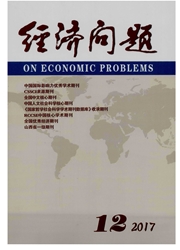

 中文摘要:
中文摘要:
陆地生态系统是区域内被植被覆盖的土地空间的总称,其碳承载力是生态系统能净吸收经济系统CO2的最大质量。当经济系统排放的CO2不大于陆地生态系统碳承载力时,则该区域不会成为导致大气浓度升高的碳源地。本文基于土地利用现状分类标准,将陆地生态系统细分为7个一级子系统和15个二级子系统,分析了采用NEP或CSR度量单位时间单位面积二级陆地生态子系统碳承载力的科学性,构建了测算区域陆地生态系统碳承载力的模型,并阐述了NEP或CSR的选取原则。实证结果表明,云南省陆地生态系统碳承载力递增缓慢而碳排放量递增较快,自2011年起开始出现碳超载现象,其中水泥生产量快速递增是云南省碳超载的主要原因。
 英文摘要:
英文摘要:
The terrestrial ecosystem,the generic of land covered by vegetation,which bearing capacity of CO2 is the net maximum absorption of CO2 of economic system. When the quality of CO2 from the economic system of a region is fewer than the bearing capacity of CO2 of the terrestrial ecosystem,the region will not be a place of carbon source that can result in the concentration of CO2 of atmosphere. Seven first level ecosystems and fifteen second level ones have been divided on the basis of the present land- use classified standard,and the scientificity has been analyzed to measure the bearing capacity of CO2 of the second level ecosystem of unit area and unit time. The calculation model of bearing capacity of CO2 of the terrestrial ecosystem has been built and how to choose the value of NEP or CSR has been expounded. The empirical research indicates that the rate of rise of the bearing capacity of CO2 of terrestrial ecosystem was less than that of the discharge of CO2 from the fossil energy and cement manufacturing,and the overloading phenomenon of CO2 appeared in 2011. That the rate of rise of cement output is more than that of the bearing capacity of CO2 of terrestrial ecosystem is the main reason.
 同期刊论文项目
同期刊论文项目
 同项目期刊论文
同项目期刊论文
 期刊信息
期刊信息
